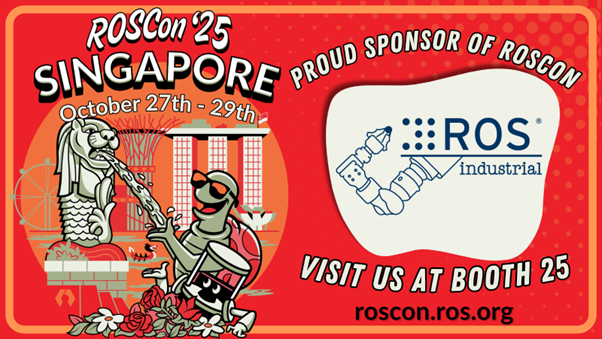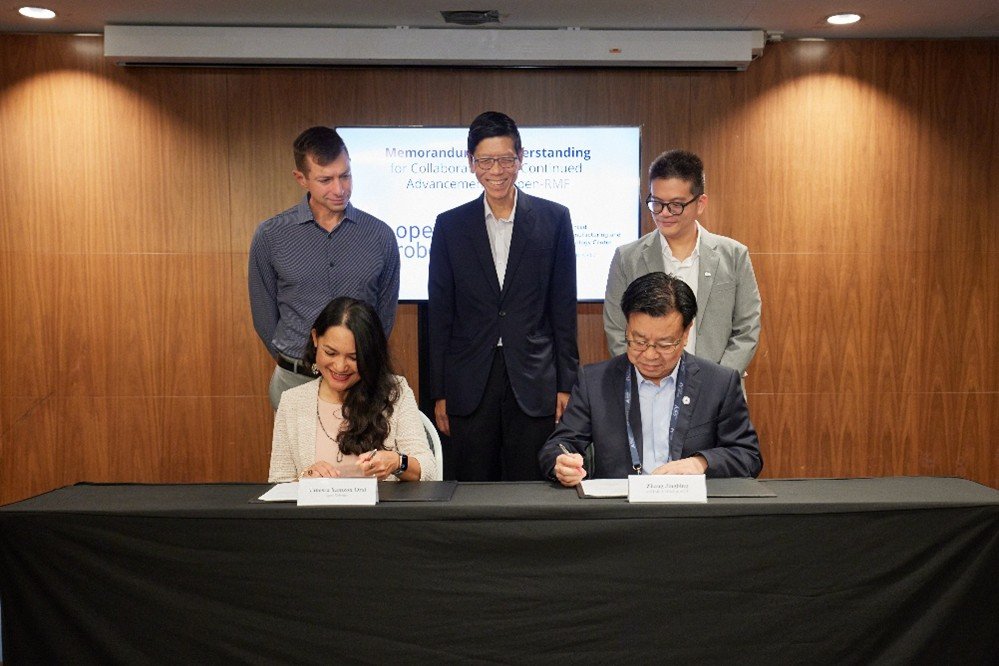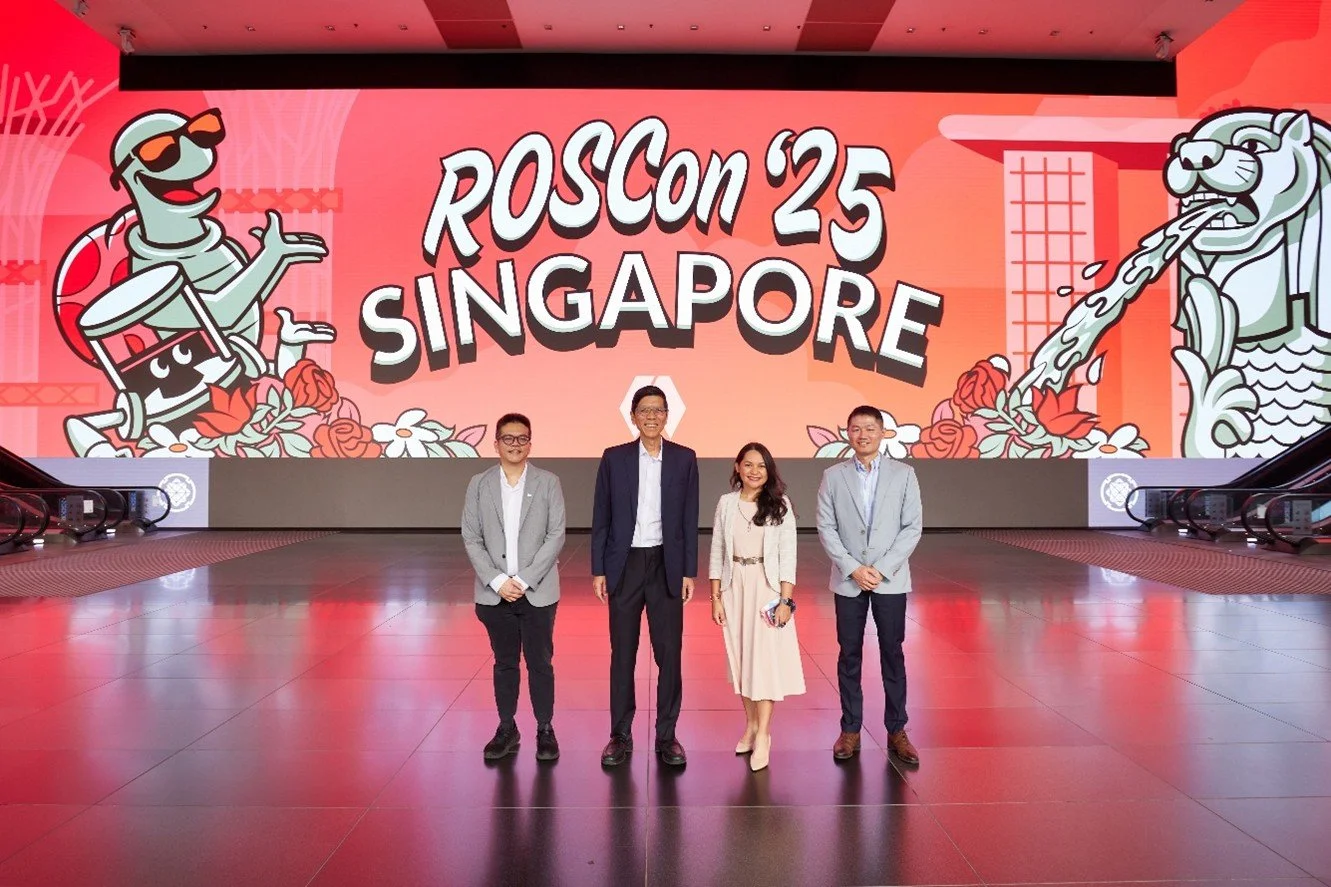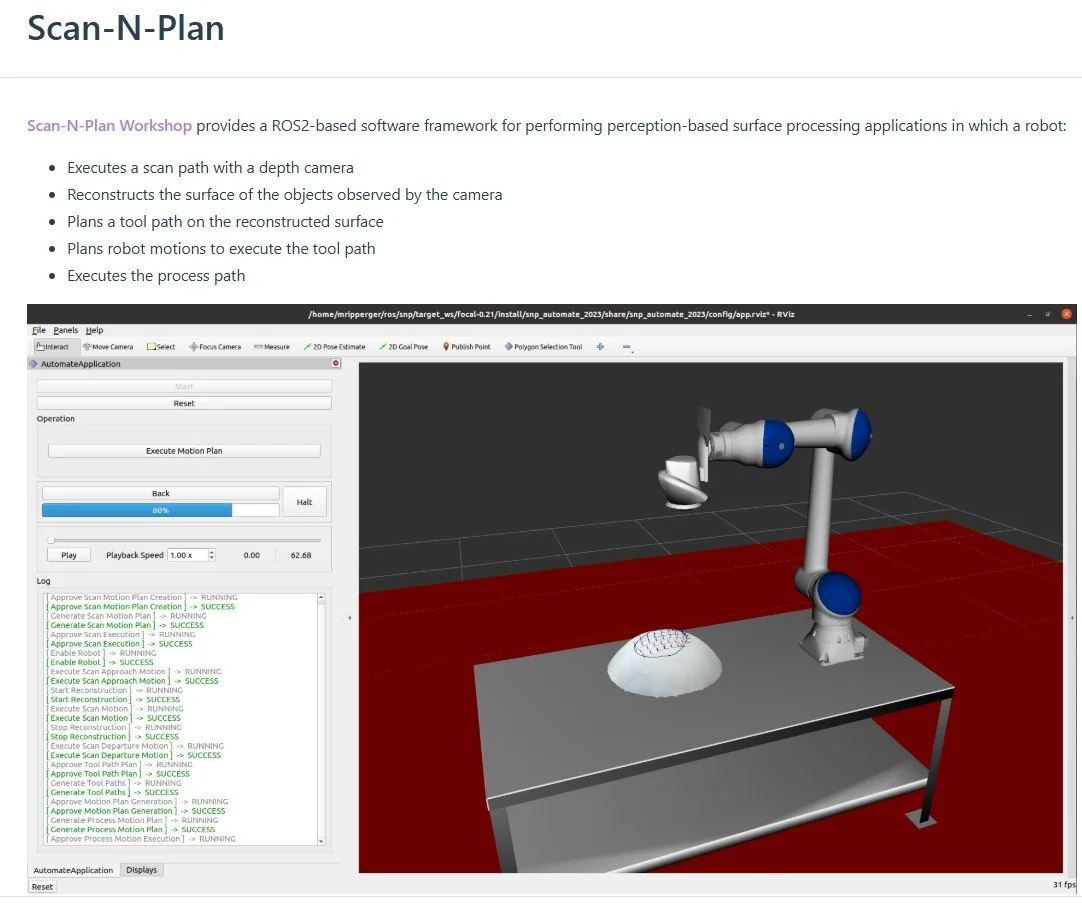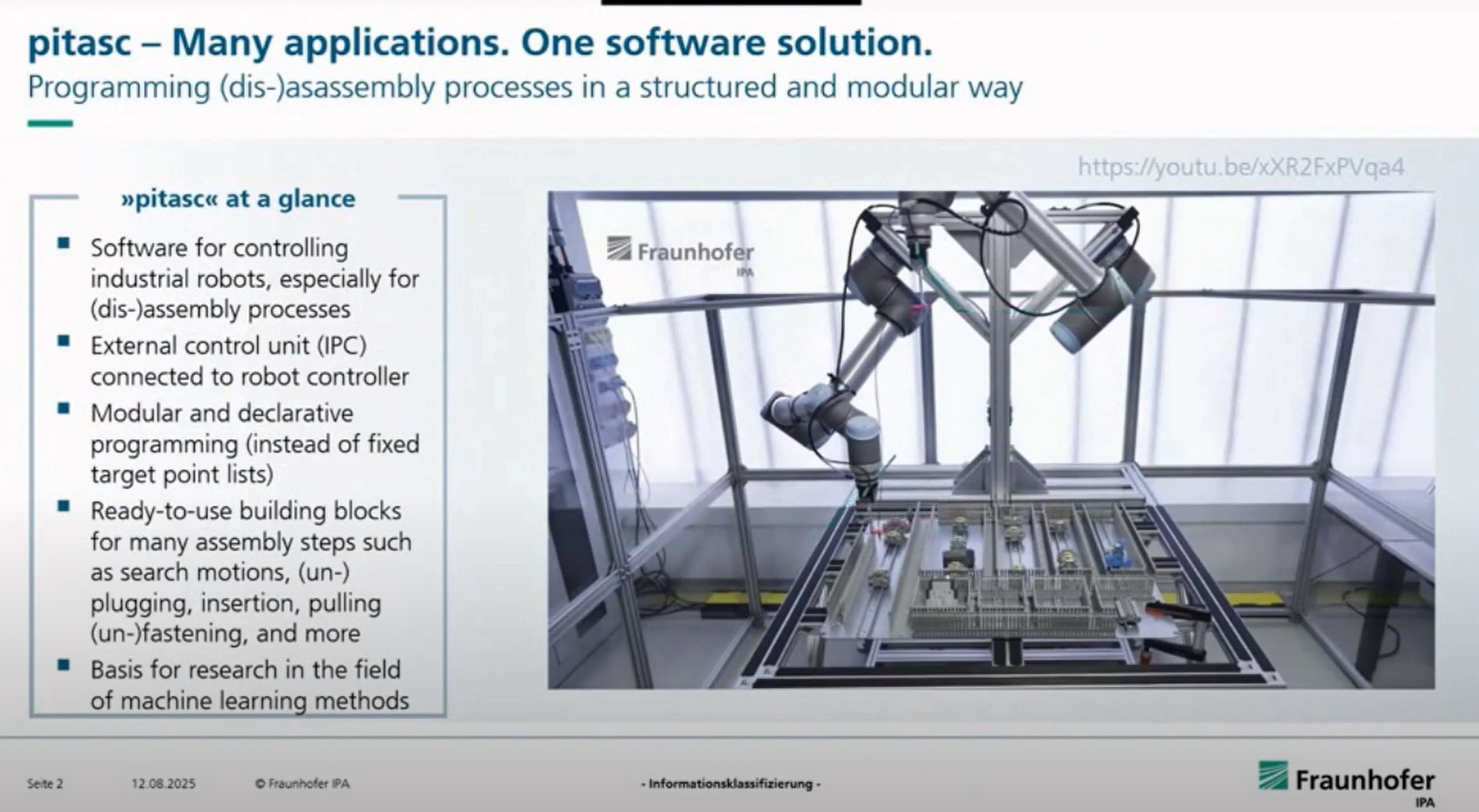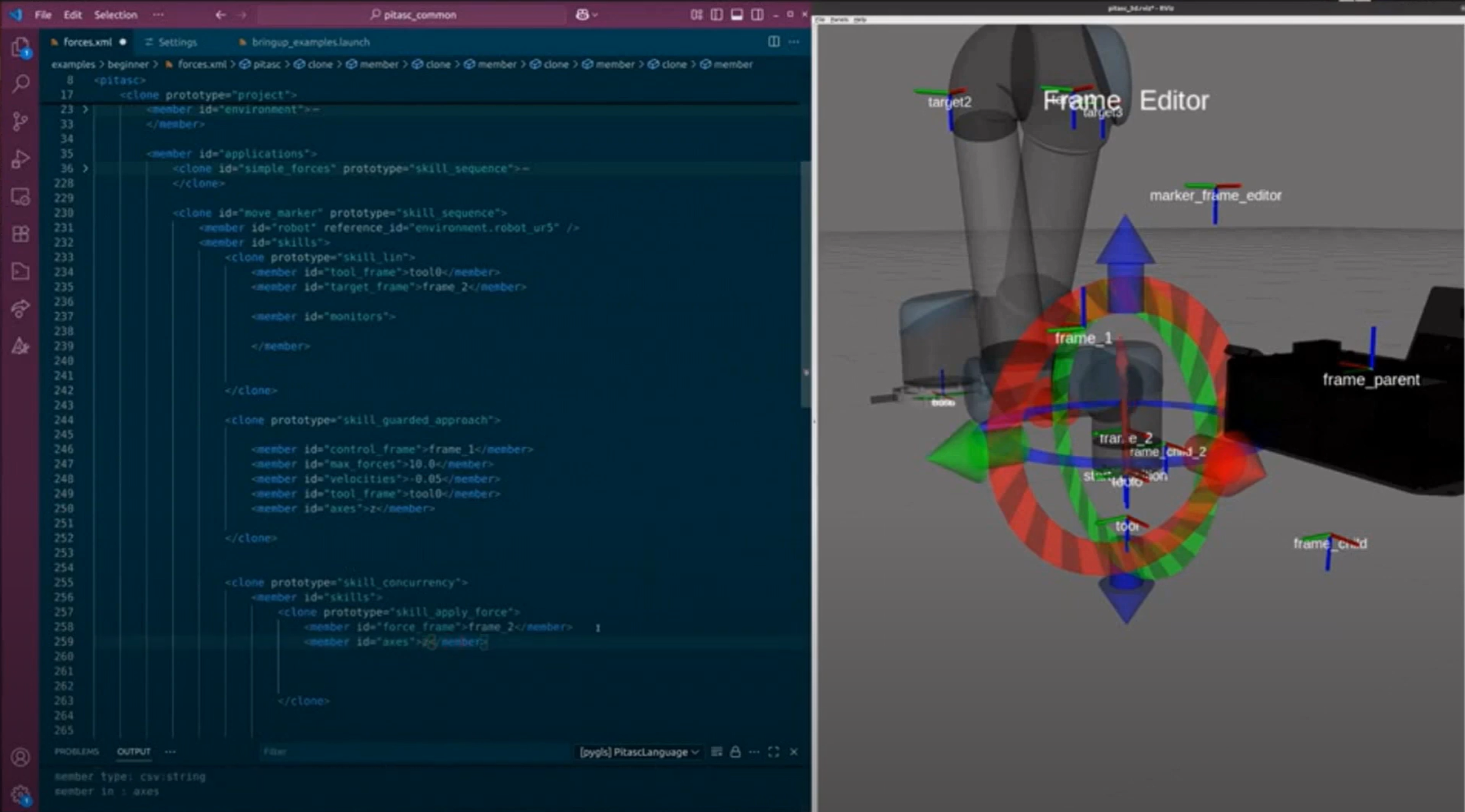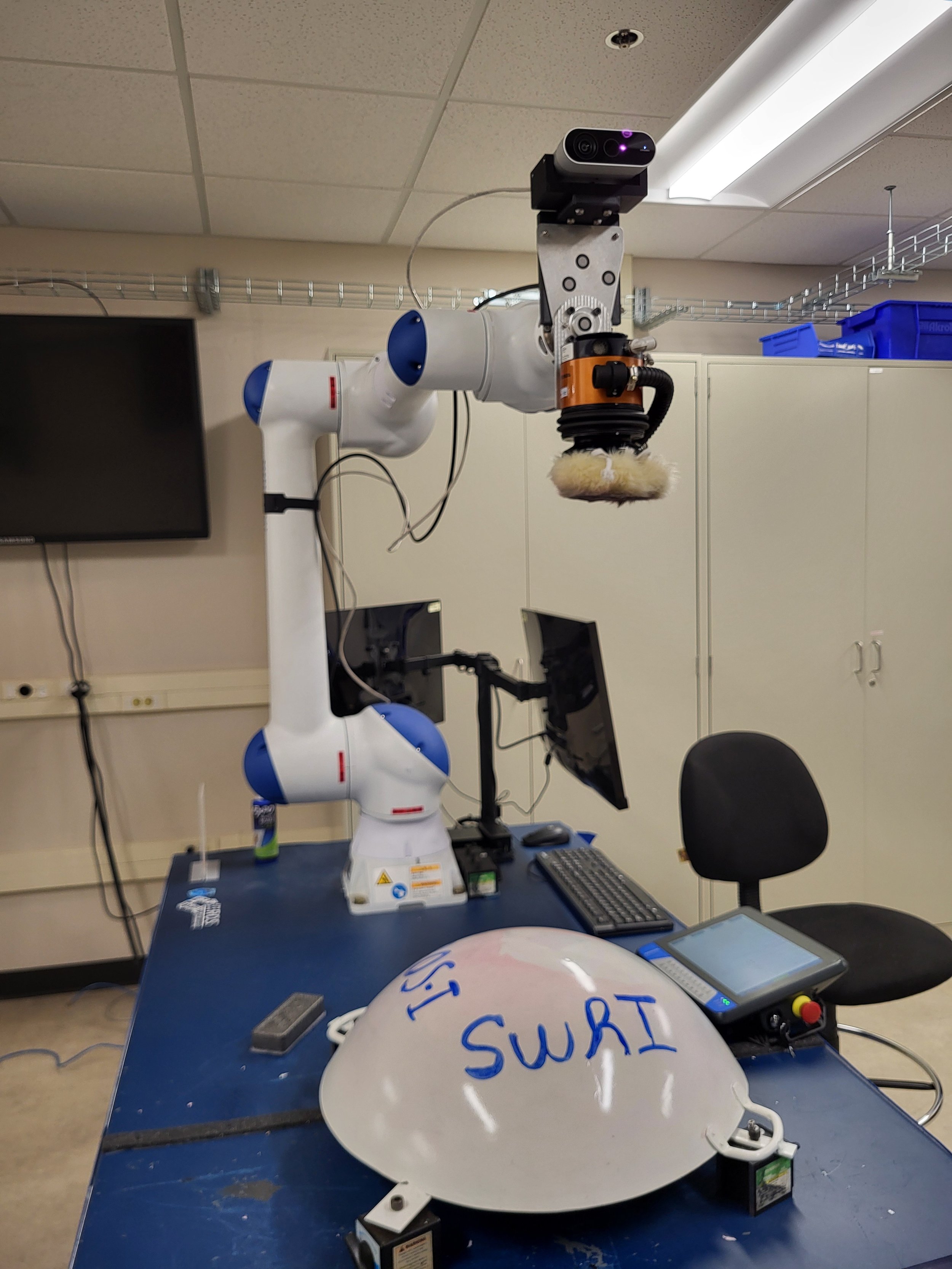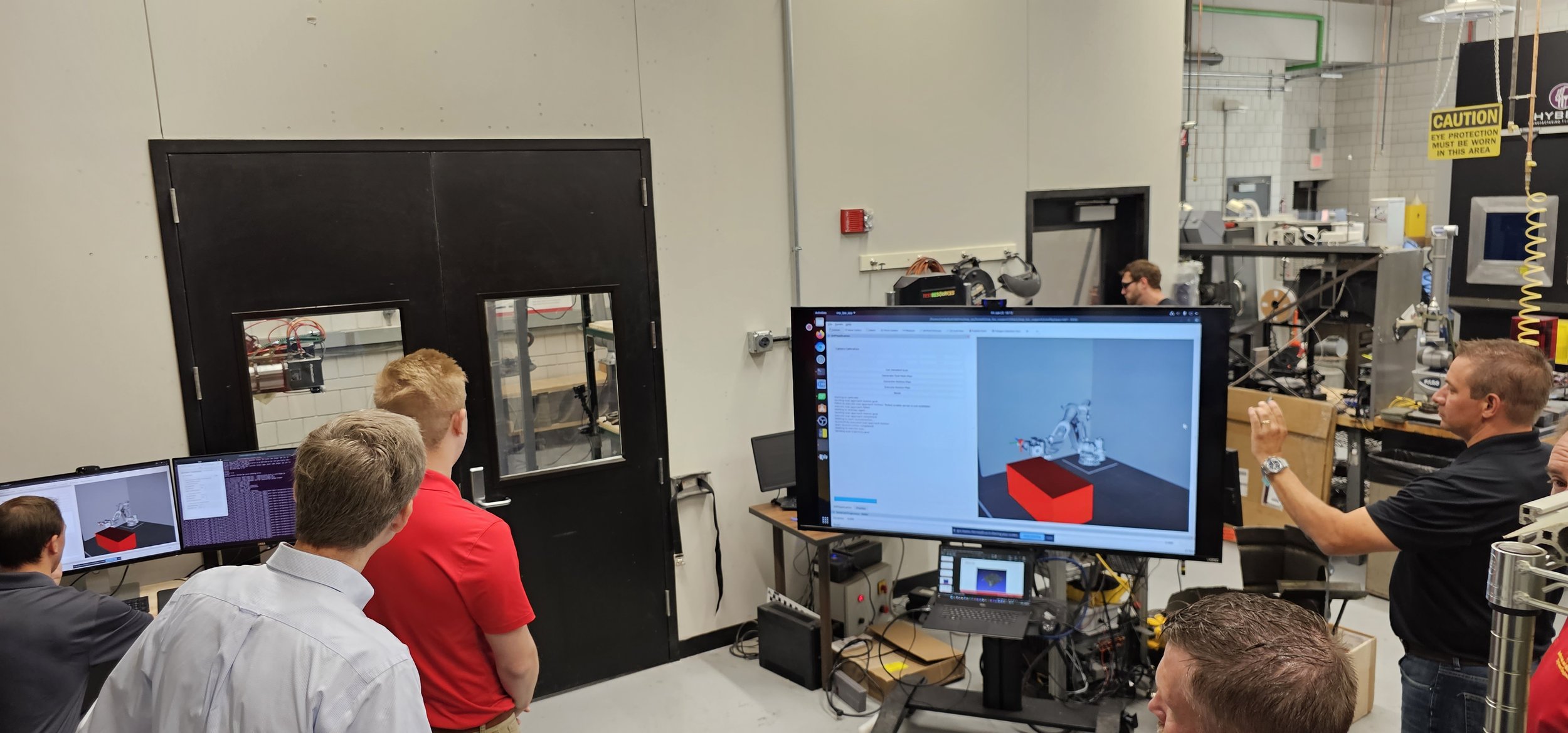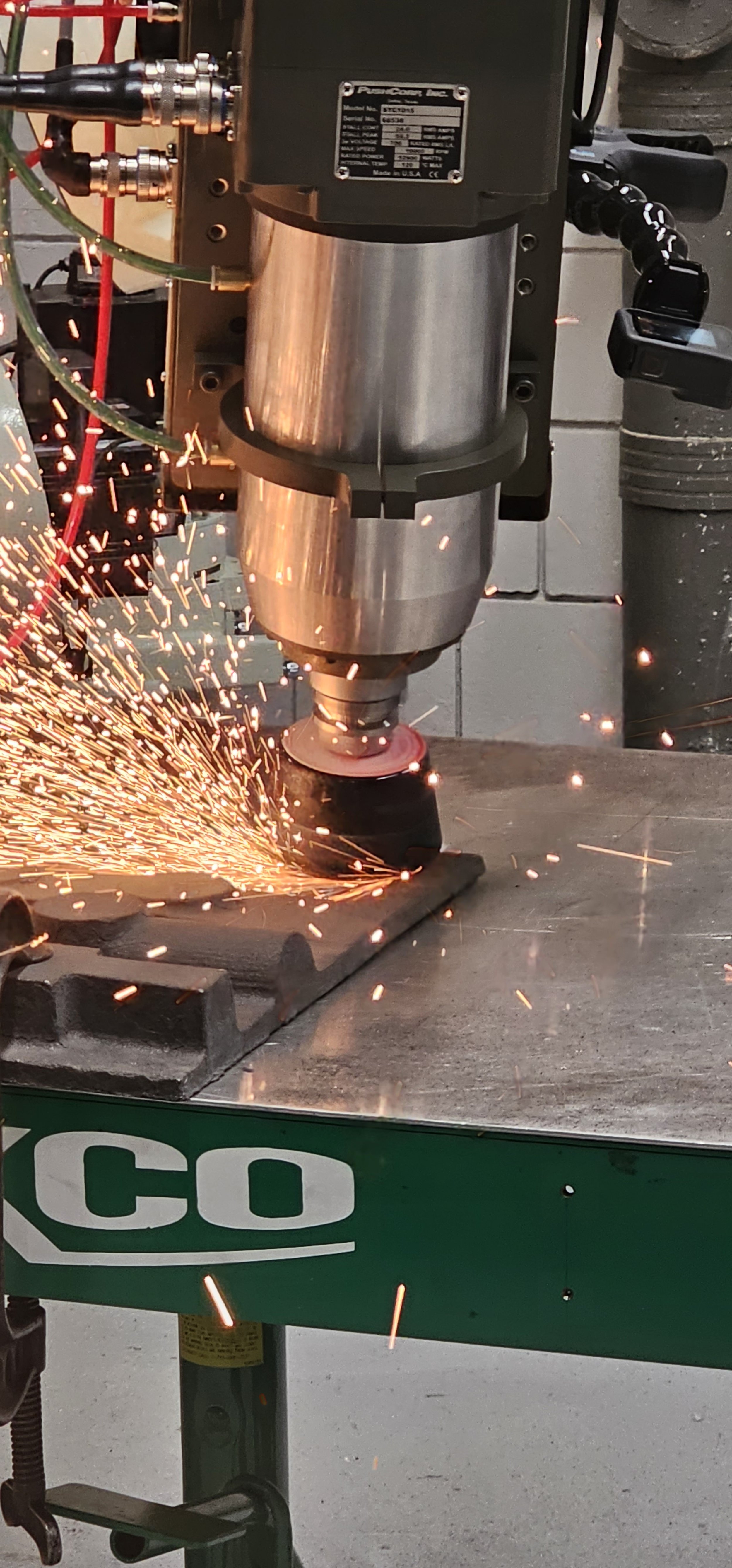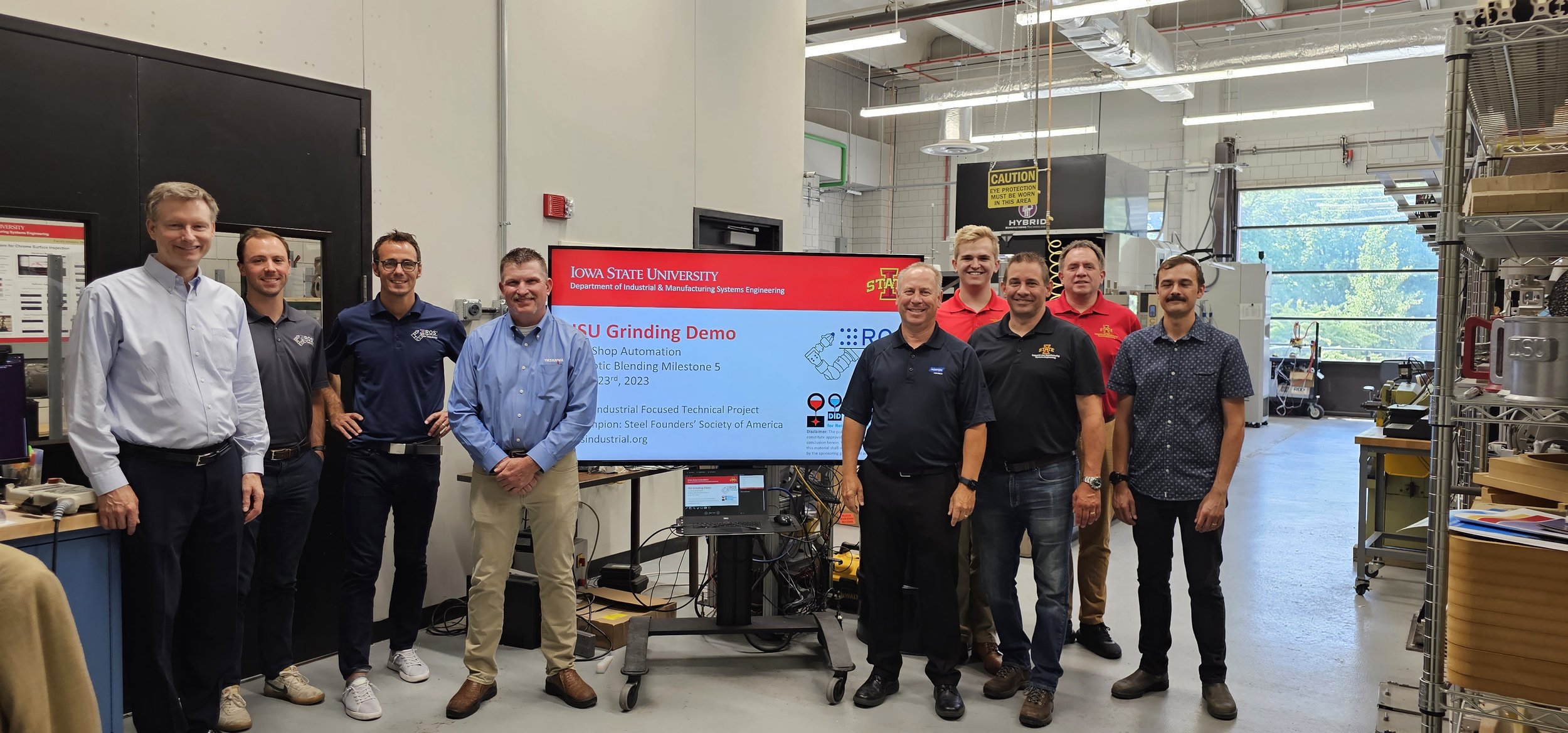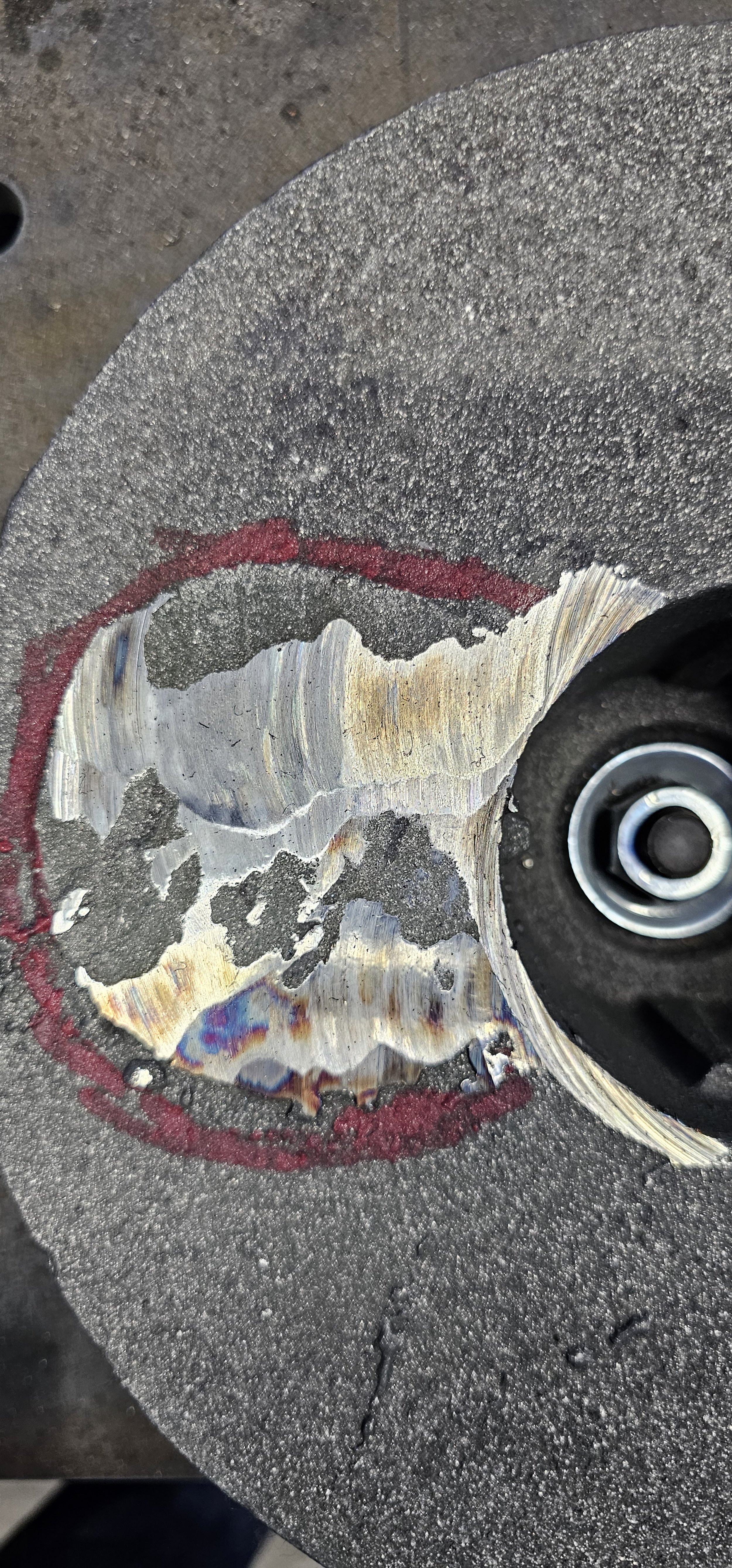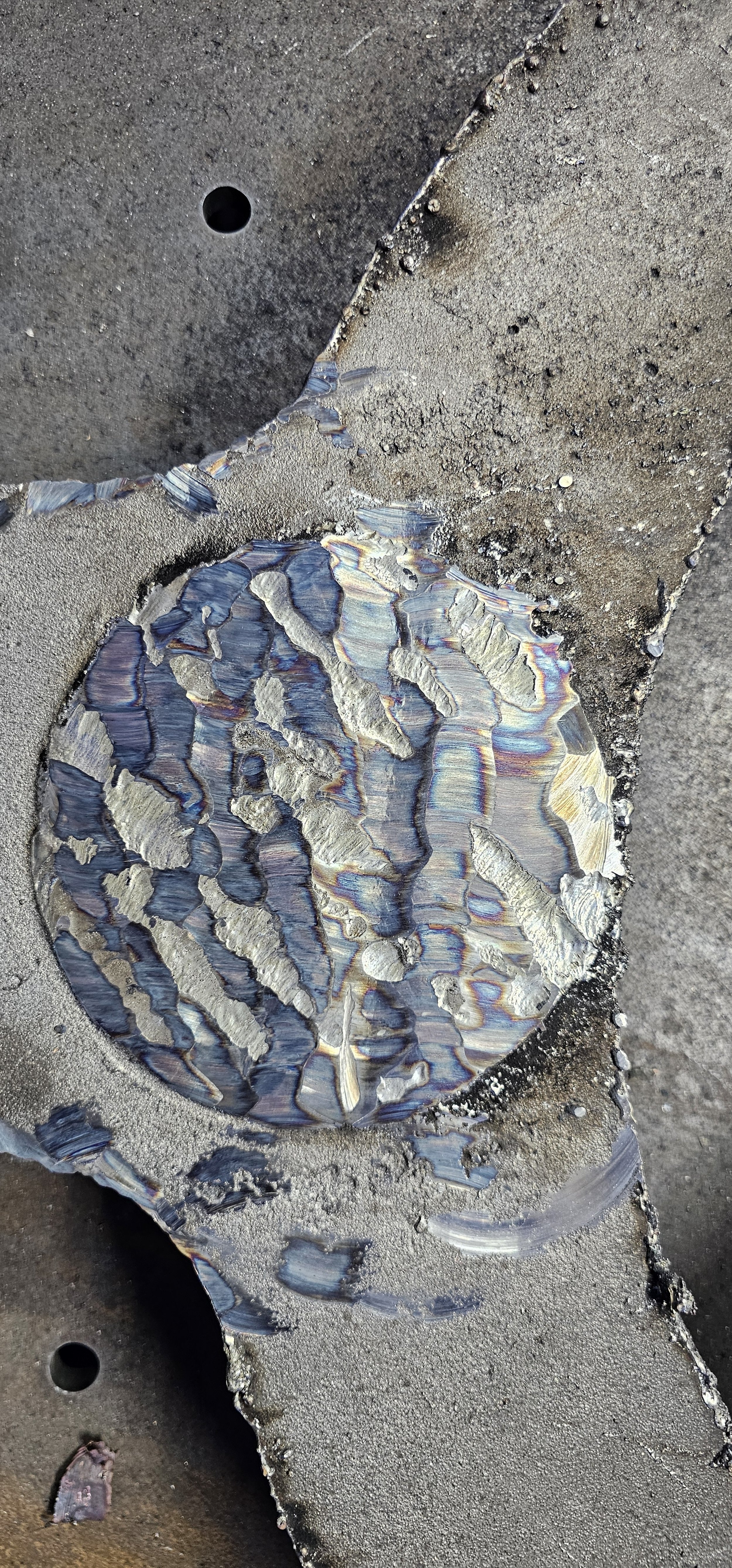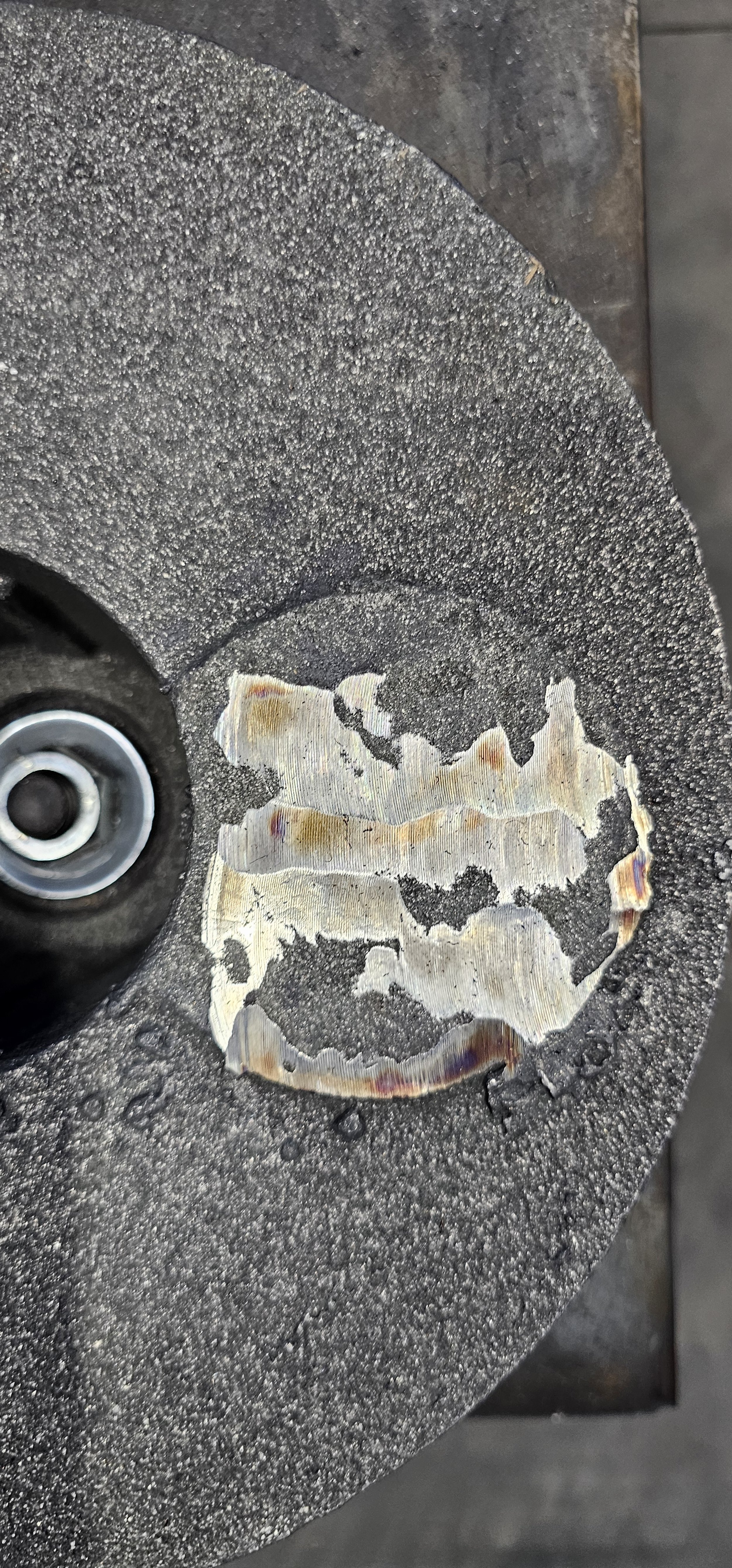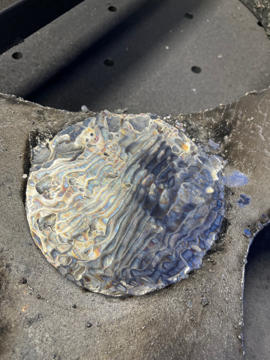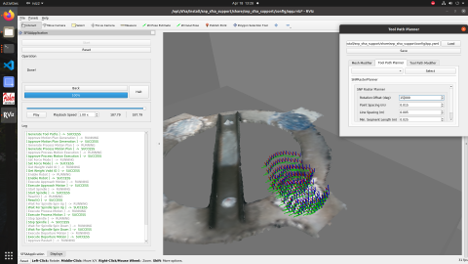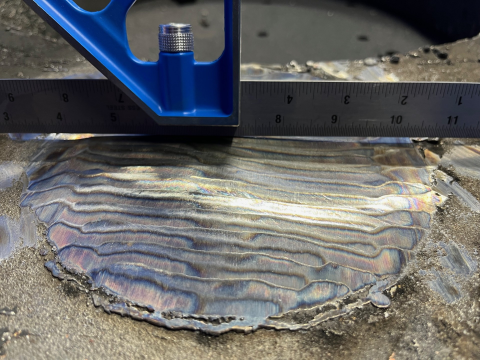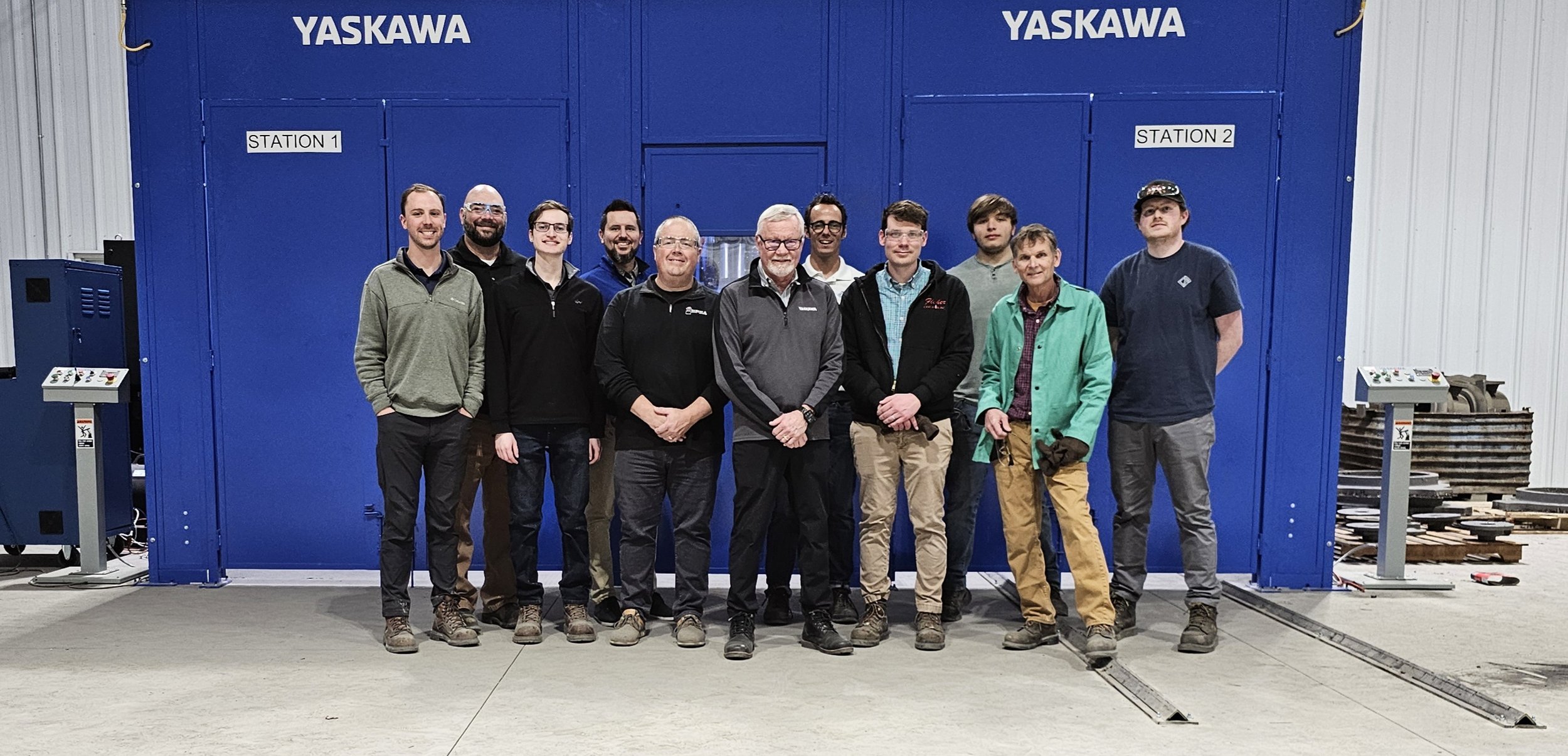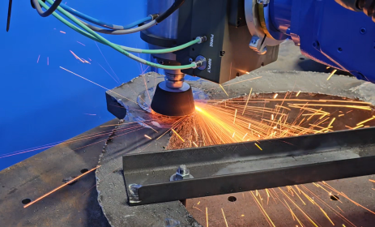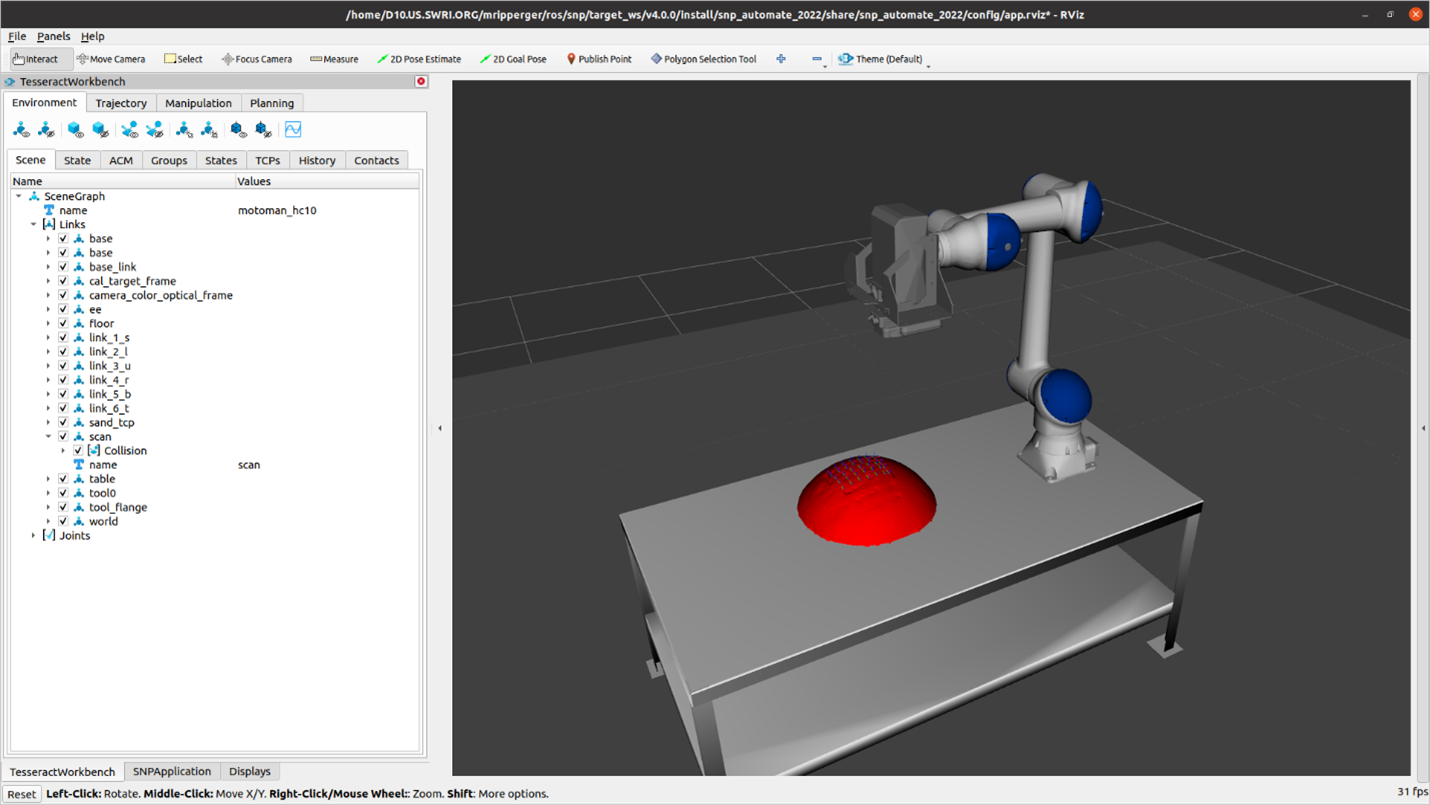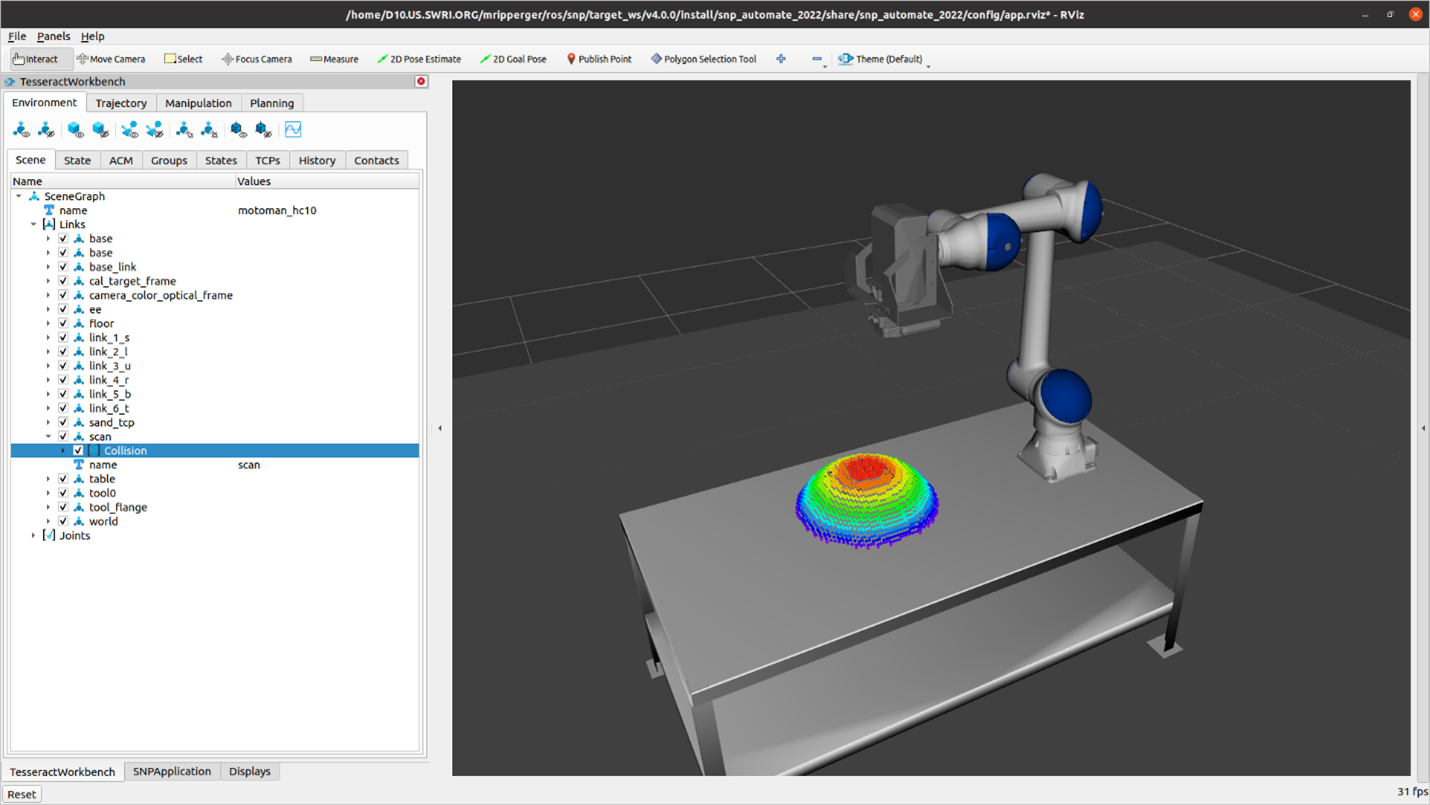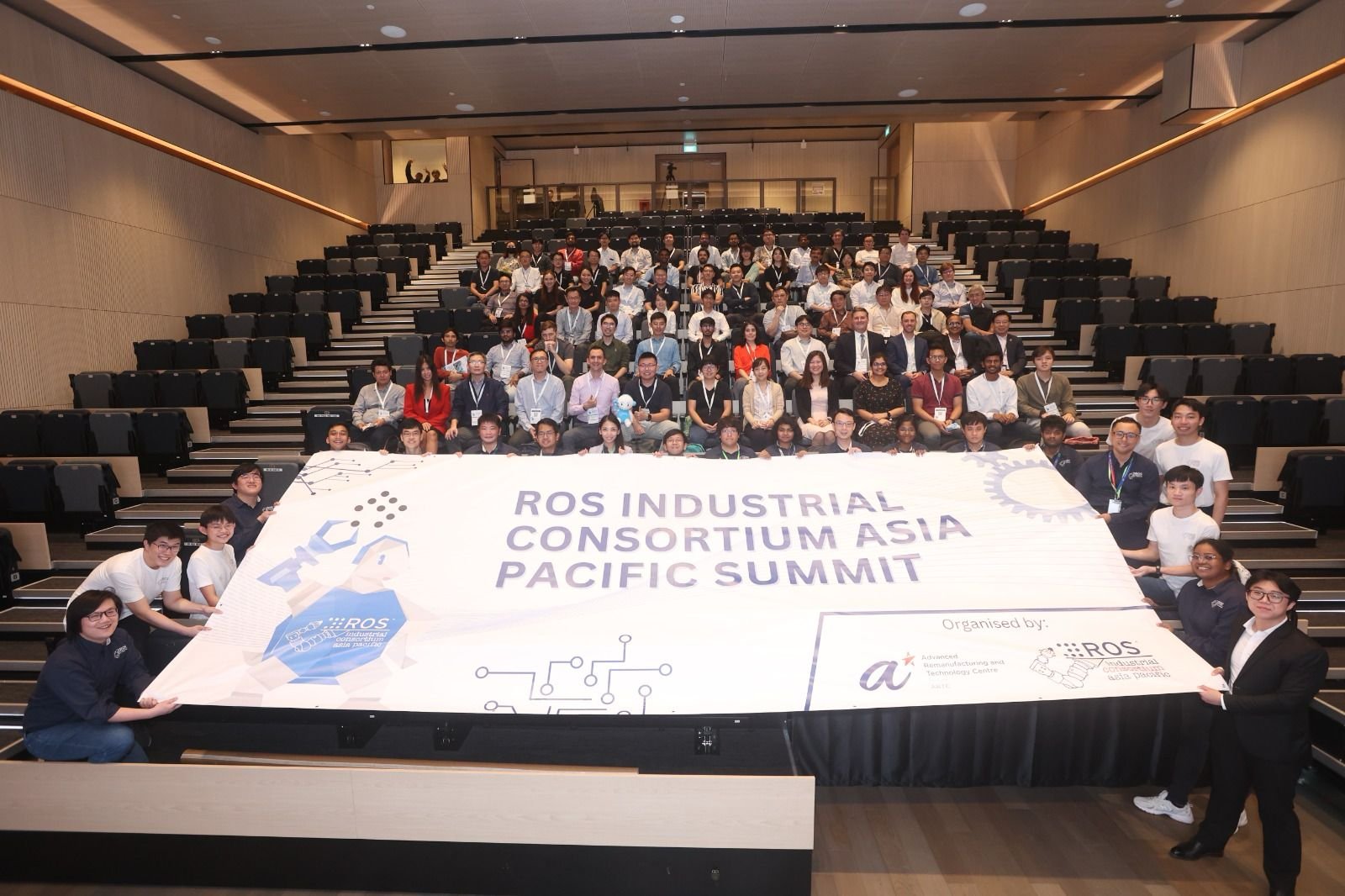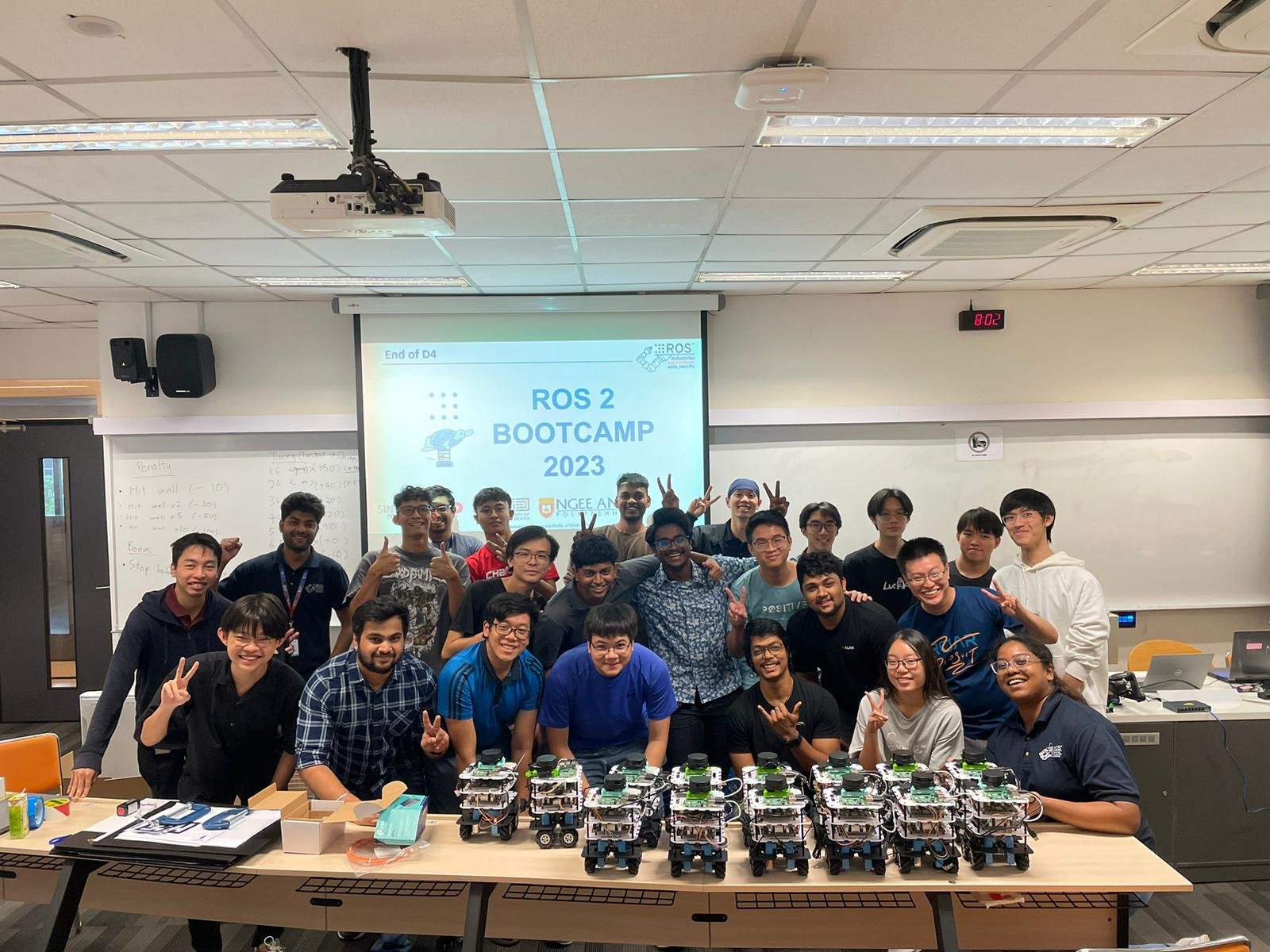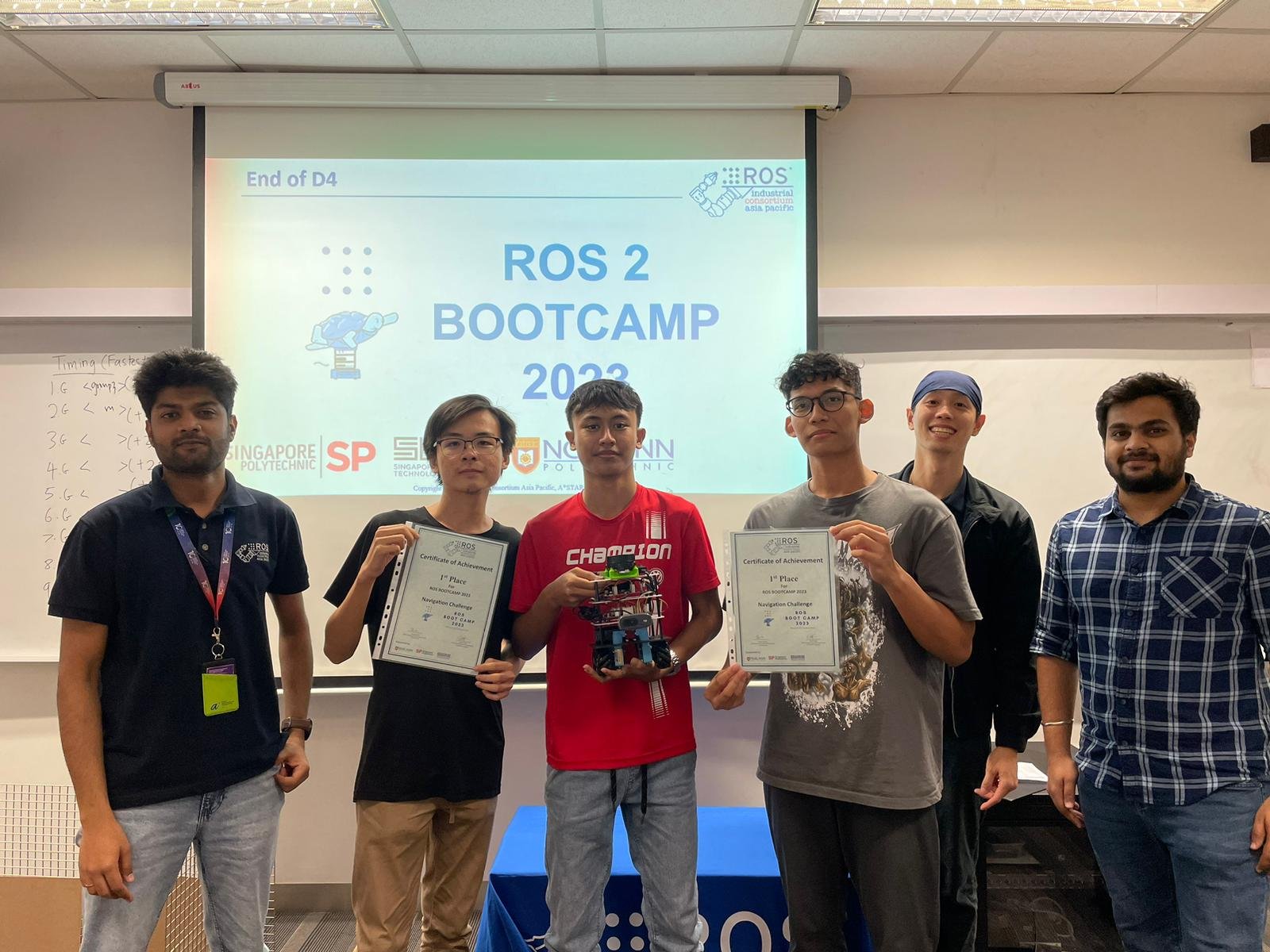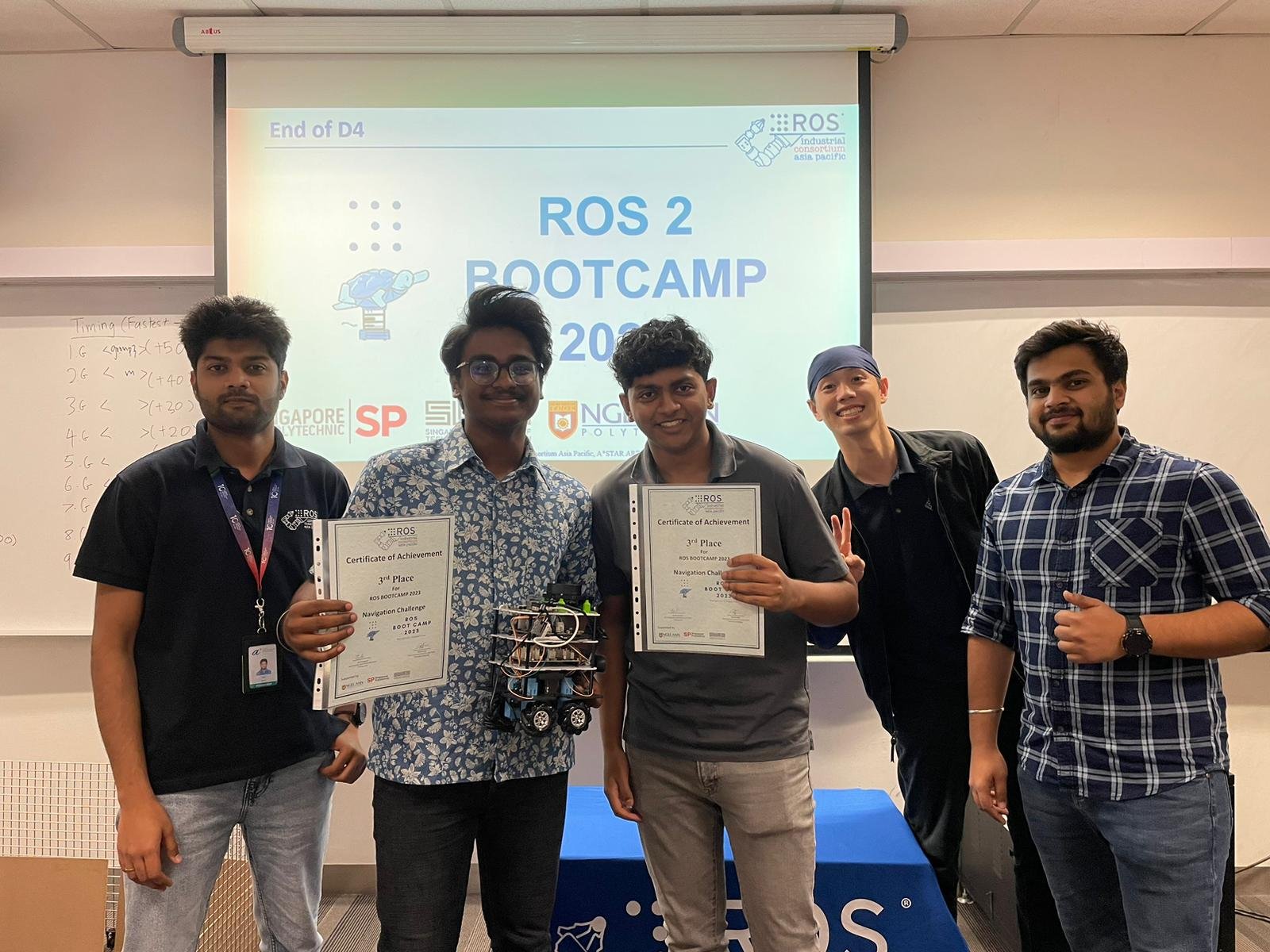ROSCon 2025 & RIC-AP Summit 2025 Blog Series: Singapore’s Defining Week for Open-Source Robotics
/On 30 October, the focus shifted from global to regional at the ROS-Industrial Consortium Asia Pacific Summit, held in conjunction with SWITCH and ROSCon.
ROSCon focused more on the global community, while the RIC-AP Summit was about the growth and contributions within Asia Pacific: deployments, testbeds, standards, talent, and industry partnerships.
1.Launch of ELEVATE @ BCA Braddell Campus
A headline moment of the Annual Summit was the showcase of ELEVATE @ BCA Braddell Campus—an Open-RMF sandbox designed for robot OEMs, system integrators and even end users to validate interoperable solutions, test technical compliance and adopt standard practices for robotics within the built environment space. a-star.edu.sg
Key aspects:
Cyber-physical test environment to validate how robots interact with lifts, doors, building management systems and shared infrastructure using Open-RMF.
Open to end-users, OEMs, system integrators and startups to trial real deployments before scaling into commercial deployments
Backed by a multi-agency partnership (A*STAR ARTC, BCA and S&TPPO) and seeded with leading industry participants including robotics and infrastructure providers.
ELEVATE positions Singapore as a reference site for Open-RMF adoption and conformance, giving both local and international players a low-friction path to test, integrate and prove interoperable systems.
During the summit, 8 companies has shown their commitment to use the space to advance open-RMF through the use of ELEVATE for testing. The companies that have signed a Letter of Support (LoS) are:
Black Sesame Technologies
Delta Electronics
HOPE Technik
KABAM Robotics
Lionsbot
Megazo Technologies
Panasonic
SIMPPLE
1 ELEVATE stands for EvaLuatE, VAlidate, Test Environment.
Photographs used with permission from Singapore Week of Innovation and Technology (SWITCH) www.switchsg.org
2. Expansion of the ROS-Industrial Train and Place Programme with SGInnovate
The Annual Summit also marked the announcement of a partnership between ROS-Industrial Consortium Asia Pacific (led by ARTC) and SGInnovate, to leverage on the Deep Tech Central platform to accelerate ROS and robotics talent placement into industry roles.
Key Highlights:
Future-Ready Robotics Workforce: ROS-Industrial Consortium Asia Pacific (ROS-I AP), led by A*STAR ARTC, partners with SGInnovate to strengthen Singapore’s robotics talent pipeline.
Industry Placement Focus: New partnership emphasizes connecting talent directly with robotics companies such as AiTreat, Fabrica AI, Griffin Labs, Hivebotics, and Vilota, and many others.
Hands-On Experience: Trainees gain practical deployment exposure, addressing talent gaps in robotics and embodied AI.
Data-Driven Insights: Deep Tech Central provides analytics to understand talent needs and industry demand, strengthening Singapore’s robotics ecosystem and contributing globally.
Through this collaboration, we connect talent with real deployment opportunities, strengthening Singapore’s position in robotics and deep tech.
What We Shared at RIC-AP Summit 2025 @ SWITCH Beyond: Highlights from the Stage
The summit showcased cutting-edge developments in robotics and embodied AI, starting with a keynote on open-source frameworks like ROS 2 and Open-RMF driving adaptive systems, with Yadu from Intrinsic setting the stage for this transformative conversation
Global leaders shared the state of ROS-Industrial across APAC, America, and Europe, emphasizing collaboration and talent exchange, with insights from Paul Evans (Executive Director, SwRI), Vishnuprasad Prachandabhanu (Consortium Manager, ROS-I Europe at Fraunhofer), and Maria Vergo (Consortium Manager, ROS-I APAC)
Photographs used with permission from Singapore Week of Innovation and Technology (SWITCH) www.switchsg.org
Real-world Open-RMF deployments in airports and hospitals demonstrated its maturity as production infrastructure, while the ELEVATE Sandbox at BCA Braddell Campus was introduced as the national testbed for interoperability.
Panels spotlighted diversity through Women in Robotics and explored multidisciplinary challenges in embodied AI beyond code. It was refreshing to hear from women leaders such as Suchitra Narayan (SGInnovate), Chan Min Ling (HMGICS), Samantha Su (IMDA), and Prof. Malika Meghjani (SUTD), who shared inspiring stories of leadership, innovation, and resilience in robotics.
Photographs used with permission from Singapore Week of Innovation and Technology (SWITCH) www.switchsg.org
Future-facing sessions explored two critical themes: the rise of humanoid robotics and the need for a strong talent pipeline. Prof. Han Boon Siew (Schaeffler) delivered an insightful presentation on innovations in humanoid design, mobility, and interaction, framing their societal impact and strategic opportunities in Asia.
Adding to the excitement, Panasonic’s Duyhinh Nguyen shared their journey with Open-RMF, underscoring growing interest from Japanese companies in interoperability and real-world deployments.
On the talent front, Priscilla (SGInnovate) and Sheila (ROS-I APAC) introduced the ROS-Industrial Train-and-Place Programme, calling on industry partners to collaborate in building a future-ready robotics workforce through Deep Tech Central.
Photographs used with permission from Singapore Week of Innovation and Technology (SWITCH) www.switchsg.org
The RIC-AP Summit 2025 made one thing clear: Asia Pacific is not just participating in the robotics revolution—it is leading it. From the heart of Singapore, the region is building the future of interoperable robotics, where open-source frameworks, industry partnerships, and talent converge to transform industries and societies.
A special thanks to all our speakers and panellists for sharing their insights and driving meaningful conversations that shape the future of robotics.


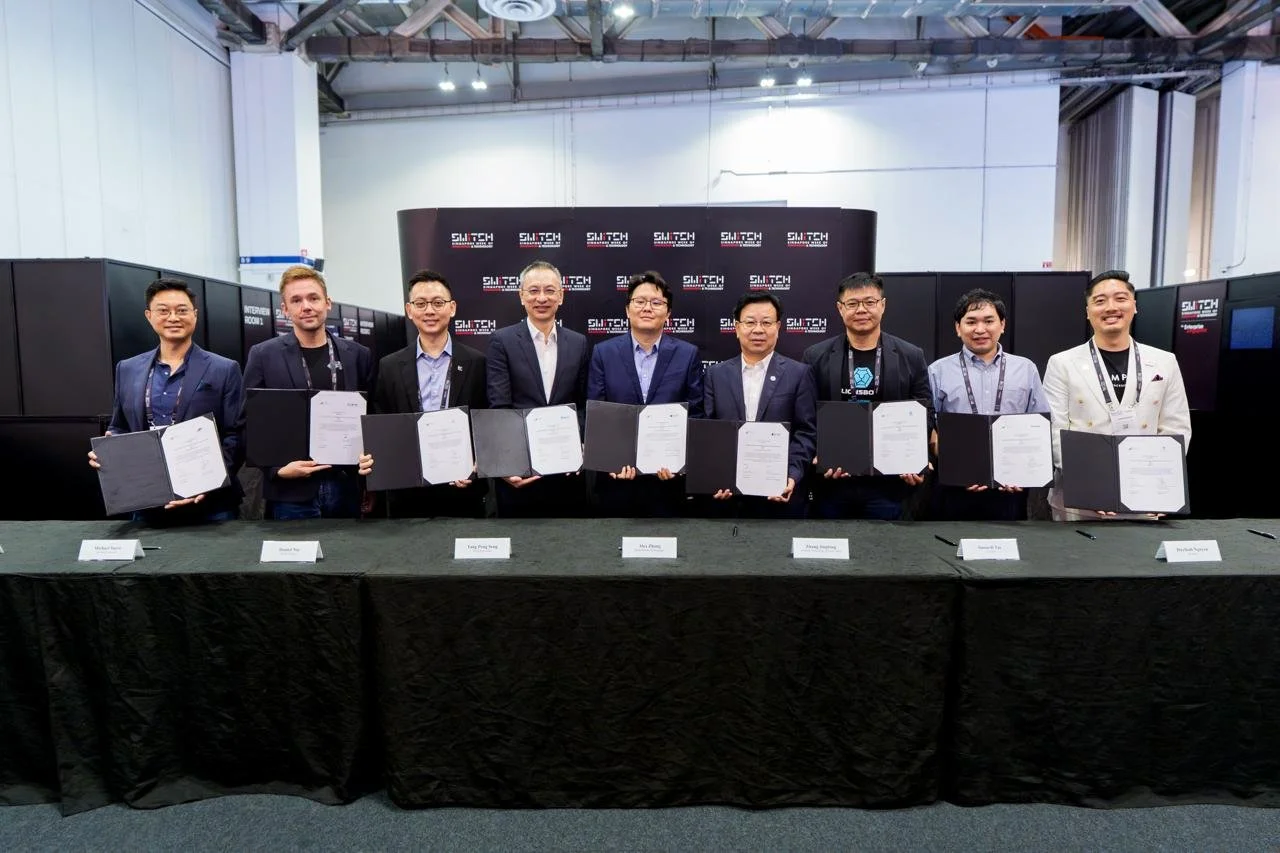







![Beyond Stage 1315 presentation4 [unedited - speaker blur].jpeg](https://images.squarespace-cdn.com/content/v1/51df34b1e4b08840dcfd2841/1766376319184-7JHVU8DHXGCL6K0CDKQQ/Beyond+Stage+1315+presentation4+%5Bunedited+-+speaker+blur%5D.jpeg)


